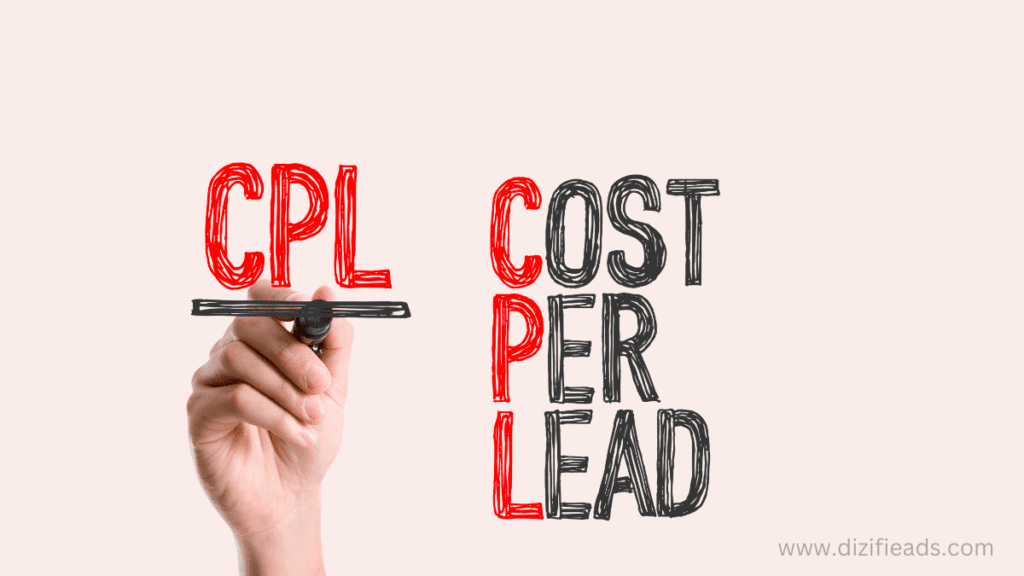CPL (Cost Per Lead): Understanding Crunching the Digits
The world of digital trade moves fast. Being ahead of the curve is key to business success. Many techniques and tactics are available. It can be overwhelming to know where to focus. One metric that has gained significant traction in recent years is CPL or Cost Per Lead. In this blog post, we’ll explain what CPL is.
Understanding CPL (Cost Per Lead)
Starting with the basics: what’s CPL? It’s Cost Per Lead. It’s the money for a single lead. A lead is a potential customer interested in your business. They share contact info or take desired action matters to companies, affecting trade efficiency. Knowing costs helps optimize campaigns for ROI.
Why does CPL matter?

Here are a few reasons why this metric is fundamental:
- Cost Efficiency: Knowing your CPL allows you to assess the cost-effectiveness of your marketing campaigns. You know the cost to get a lead, you can see which methods work best and invest.
- ROI Optimization: CPL is directly tied to your return on investment (ROI). By optimizing your CPL strategy, you can maximize your ROI and ensure that you’re getting the most bang for your buck from your marketing efforts.
- Scalability: Understanding your CPL allows you to scale your marketing efforts effectively. Knowing the cost of a lead lets you scale your campaigns.
Maximizing Your Profits with CPL

Let’s explore techniques for working with CPL to make the most profit. First, we’ll define what CPL is and why it’s important.
- Define Your Ideal Customer: To boost profits, you must make the most of your marketing budget. It’s important to focus on reaching the right people. Start by figuring out who your perfect customer is. Consider their age, hobbies, and how they act. Tailor your marketing efforts to appeal to them. This way, you can attract quality leads without spending too much.
- Use Data to Inform Your Strategy: Knowing the cost per lead helps determine the most effective methods to invest in. Analyze your past performance data to identify trends, patterns, and areas for improvement. Use this information to refine your targeting, messaging, and channel selection for future campaigns.
- Optimize Your Landing Pages: Your landing pages play a crucial role in converting visitors into leads. Make sure your landing pages are optimized for conversions by using compelling headlines, clear calls-to-action, and user-friendly design. Test different elements of layout, copy, and imagery to identify what resonates best with your audience and drives the lowest CPL.
- Implement Lead Nurturing Campaigns: Not all leads are ready to make a buy immediately. Implement lead-booster campaigns to engage and educate your leads over time, moving them through the sales funnel toward transformation. You can boost change rates by sharing good content. You can do it by building trust with your leads.
- Track and Analyze Performance: Continuously monitor and analyze the performance of your CPL campaigns. Track key metrics CPL, change rate, and ROI to determine what’s working and what’s not. Use A/B testing and experiments in your campaigns for maximum
Conclusion
CPL (Cost Per Lead) is crucial for maximizing profits. Understand, optimize it, define your ideal customer, use data, and track performance. Lower your CPL, and drive higher profits for your business.
Let’s include some (FAQs) about CPL (Cost Per Lead) and provide answers to each:
1. What is CPL, and why is it important for companies?
Answer: CPL stands for Cost Per Lead. It measures the cost of acquiring a single lead. Companies use it to evaluate trade campaigns and allocate resources.
2. How is CPL estimated?
Answer: To find CPL, divide a drive cost by the leads it develops.
The formula: CPL = Total Campaign Cost / Number of Leads Generated.
3. What’s the difference between CPL and CPA (Cost Per Acquisition)?
Answer: CPL and CPA are both vital in marketing. They measure different stages of the customer journey. CPL is the cost per lead. It does this even if the lead does not convert into a sale. CPA measures the cost per acquisition. It is the cost of securing a customer or a desired action, like a purchase or a subscription. CPL focuses on lead efficiency. CPA reflects the conversion of leads into paying customers. It shows trade ROI more.
4. What are some common lead generation channels used to acquire leads?
Answer: Common lead generation channels are: email, content, social media, SEM, and ads. This includes display and affiliate ads.
5. How can companies lower their CPL?
Answer: Businesses can lower their CPL by better targeting their ideal customers. They should optimize their ad campaigns for conversions and enhance their landing pages. Lastly, they must use data to adjust their methods.
6. What role does content trade play in CPL optimization?
Answer: Content trade can help with CPL. It attracts and engages potential leads with valuable, informative content. Companies can generate high-quality leads at a lower cost. They can do this by offering content that meets their audience’s needs and interests.
7. How can A/B testing help lower CPL?
Answer: A/B testing compares two versions of a trade asset (a landing page ad). It finds which one generates more leads. By knowing the best parts, companies can lower their CPL time.
8. Is it better to aim for more leads or better-rate leads?
Answer: You might want to explore many leads. Their quality is key. It’s good to have many people interested in your product. But if they’re not likely to buy, it’s not valuable. These are curious and more likely to buy. This strategy sets you up for long-term success. Such leads are more likely to stay, buy, and boost your profit. This makes your efforts more profitable.
9. How can businesses nurture leads to improve conversion rates and lower CPL?
Answer: Lead nurturing means engaging and educating leads over time. It does this with targeted communication and content. Businesses can boost conversions and cut CPL by building trust and adding value to leads. This should be done throughout their buyer’s journey.
10. What role does targeting play in CPL optimization?
Answer: Targeting the right audience is crucial for CPL optimization. Businesses can generate leads more efficiently and lower CPL. To do this, they should define and target specific customer personas. These personas are most likely to be interested in their products or services.
11. How can businesses track and measure CPL effectively?
Answer: Businesses use tools like conversion pixels and CRM to measure CPL. Companies can analyze data from these sources to calculate CPL with precision. Then, they can make informed decisions.
12. How long does it typically take to see results from CPL optimization efforts?
Answer: CPL optimization takes time. It depends on a few factors. So, results aren’t instant. It’s like planting seeds in a garden. You can’t expect flowers to bloom overnight. Your industry’s complexity, the competition, and your strategies matter. It’s like a journey where each step forward brings you closer to your destination.
13. Is it worth outsourcing lead generation to lower CPL?
Answer: Outsourcing lead generation can be worth it for businesses. This is true if they lack the resources or skills to do it in-house. Outsourcing can provide access to specialized knowledge and tech. It may lower CPL and raise profits.
14. How often should businesses review and adjust their CPL strategy?
Answer: Businesses should review and adjust their CPL strategy once a month, or every quarter. Businesses can optimize their CPL strategy. They should be proactive and responsive to changes in the market and consumers. This will ensure ongoing success. They must also track their campaign performance.


Pingback: Lead Generation Strategies: A Digital Marketing Perspective - Clicktapp
Pingback: CPM (Cost Per Mile) Advertising: Maximizing Reach and ROI -